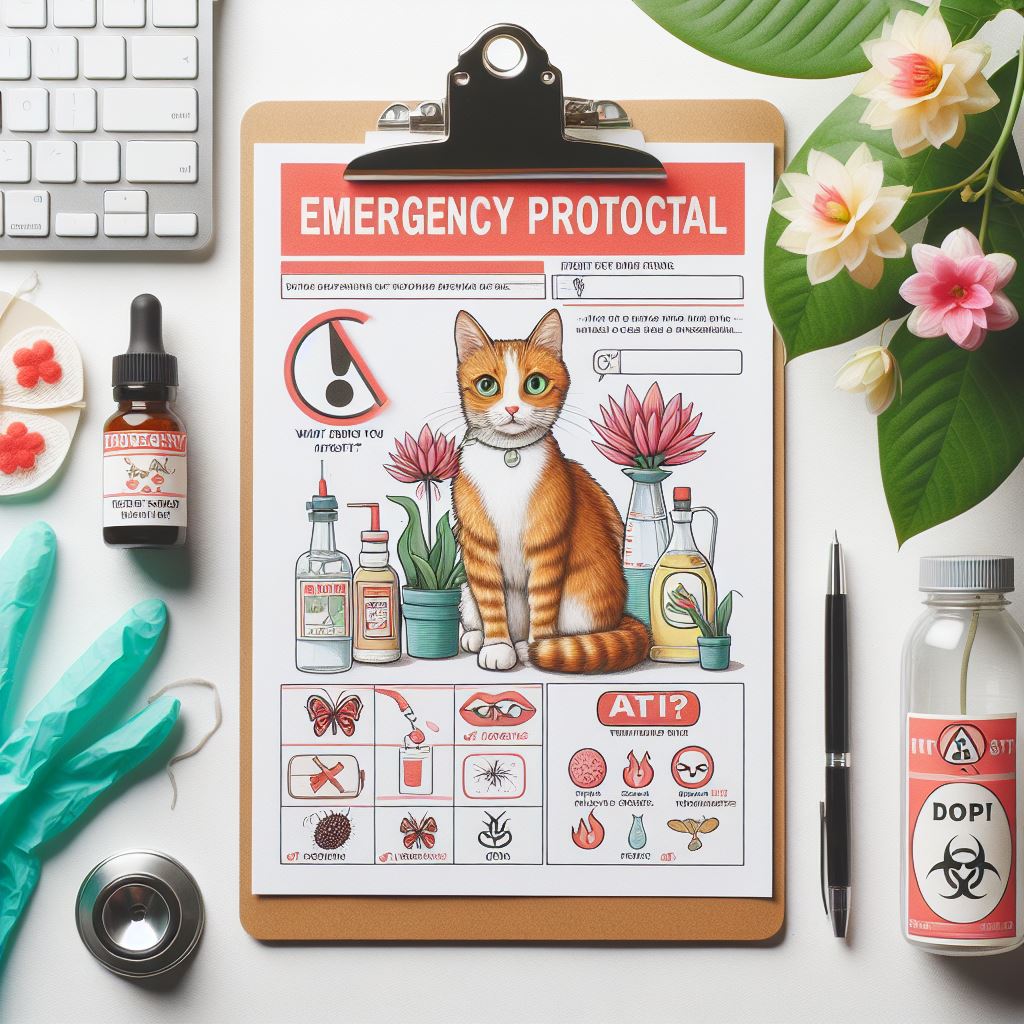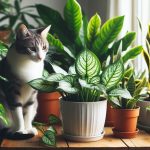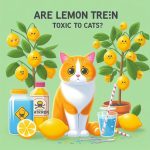If you’re a cat owner, you may have experienced a moment of panic upon discovering that your feline friend has ingested a toxic plant. Knowing what to do in such a situation is crucial for your cat’s health and well-being. From recognizing the signs of plant ingestion to taking immediate steps and seeking appropriate treatment, understanding “what to do if cat eats toxic plant” can make all the difference. Let’s delve into the essential information to help you navigate this potentially dangerous scenario and ensure the safety of your beloved pet.
Signs that Your Cat Has Ingested a Toxic Plant
What to Do if Your Cat Eats a Toxic Plant?
It’s crucial for cat owners to be aware of the signs that may indicate their pet has ingested a toxic plant. Recognizing these signs early can help in taking prompt action and seeking appropriate care for the cat. Here are the common signs to look out for if you suspect that your cat has ingested a toxic plant:

Vomiting and Diarrhea: Keep an eye out for frequent vomiting or diarrhea, which are common signs of plant toxicity in cats.
Loss of Appetite: If your cat suddenly loses interest in food or stops eating altogether, it could be a red flag.
Lethargy and Weakness: A noticeable lack of energy, reluctance to move, or general weakness may indicate poisoning.
Excessive Drooling: Unusual drooling, especially if it’s more than usual, can be a sign of plant ingestion.
Difficulty Breathing: Labored breathing or coughing may suggest that your cat has ingested a toxic plant.
Behavioral Changes: Watch for unusual behavior such as agitation, disorientation, or restlessness.
It’s essential to remember that the absence of these signs does not necessarily mean your cat has not ingested a toxic plant. If there’s any suspicion or evidence of plant ingestion, it’s best to seek veterinary advice immediately. Remember, early detection and intervention can significantly improve the outcome for your cat.
By being vigilant and knowledgeable about these signs, you can promptly address the situation if your cat eats a toxic plant and ensure their well-being.
Common Toxic Plants for Cats
It’s important for every cat owner to be aware of the common toxic plants that can pose a threat to their feline friends. Here are some of the most prevalent toxic plants that cats may encounter:

Lilies: While beautiful, lilies can be extremely toxic to cats, particularly Easter lilies, tiger lilies, and Asiatic lilies. Ingesting even a small amount of these plants can lead to severe kidney damage in cats.
Sago Palm: This popular ornamental plant contains toxins that can cause liver failure in cats if ingested. Even a small quantity of any part of the plant, including the leaves and seeds, can be fatal.
Azaleas and Rhododendrons: These common garden plants contain toxins that can lead to symptoms such as vomiting, diarrhea, weakness, and even coma if consumed by cats.
Tulips and Hyacinths: Both of these spring-blooming plants contain toxins in their bulbs which, if ingested by cats, can cause significant stomach upset and, in some cases, heart problems.
Aloe Vera: While known for its healing properties, aloe vera can cause vomiting, lethargy, and diarrhea in cats if ingested.
Dieffenbachia: This popular houseplant, also known as dumb cane, can cause oral irritation, difficulty swallowing, and vomiting if ingested by cats.
It’s crucial for cat owners to familiarize themselves with these and other toxic plants, and to take preventive measures to ensure their cats are kept safe from them. In the next section, we’ll explore immediate steps to take if your cat ingests a toxic plant to ensure their well-being.
Immediate Steps to Take if Your Cat Ingests a Toxic Plant
If you suspect that your cat has ingested a toxic plant, it’s crucial to take immediate action to minimize the potential harm. Here’s what to do if your cat eats a toxic plant:

Remove Your Cat from the Area: If you catch your cat in the act of munching on a plant that you know to be toxic, gently remove them from the area to prevent further ingestion.
Identify the Plant: Try to identify the plant your cat has ingested. If possible, take a sample or a photo of the plant. This will assist the veterinarian in determining the best course of action.
Contact Your Veterinarian: Immediately contact your veterinarian or a pet poison helpline for guidance. Provide them with details about the plant ingested, your cat’s symptoms, and any other relevant information.
Observe Your Cat: Monitor your cat for any signs of distress or illness. Common symptoms of plant ingestion may include vomiting, diarrhea, lethargy, drooling, difficulty breathing, or changes in behavior.
Do NOT Induce Vomiting Unless Instructed: It’s important to note that inducing vomiting in your cat should only be done under the guidance of a veterinarian or animal poison control expert. In some cases, inducing vomiting can do more harm than good.
Remember, time is of the essence in these situations, so swift action is crucial. By taking these immediate steps, you can help minimize the potential harm and ensure the best possible outcome for your feline companion.
Calling the Pet Poison Helpline – What to Do if Your Cat Eats a Toxic Plant?
If you suspect that your cat has ingested a toxic plant, calling the Pet Poison Helpline should be one of the first steps you take. The Pet Poison Helpline is a 24/7 animal poison control center that provides immediate guidance and assistance in cases of potential poisoning. Here’s what to do when calling the Pet Poison Helpline:

Stay Calm: It’s natural to feel panicked, but try to stay as calm as possible when making the call. This will help you provide clear and accurate information.
Gather Information: Before calling, gather any relevant information about the plant your cat may have ingested, including the plant’s name, any available packaging or labels, and a description of the plant.
Provide Details: When speaking with the poison control specialist, be prepared to provide details about your cat, such as its weight, age, and any existing health conditions. Additionally, describe any symptoms your cat may be exhibiting.
Follow Instructions: The specialist will provide specific instructions based on the information you provide. Follow these instructions carefully, as they may include immediate actions to take before transporting your cat to the vet.
Calling the Pet Poison Helpline can provide valuable information and guidance during a stressful situation. Remember, the helpline is not a substitute for veterinary care, but it can offer vital support as you take the necessary steps to address the situation. What to do if cat eats toxic plant can be a distressing experience, but seeking help from the Pet Poison Helpline can help you navigate the situation with more confidence and clarity.
Inducing Vomiting in Cats
What to Do if Your Cat Eats a Toxic Plant?

If you suspect that your cat has ingested a toxic plant, it’s crucial to act swiftly. Inducing vomiting may be necessary, but it’s important to note that not all toxic substances should be brought back up. Before attempting to induce vomiting, here’s what to do if cat eats toxic plant:
Contact Your Vet or a Pet Poison Helpline: Before attempting to induce vomiting, it’s important to seek professional guidance. Contact your vet immediately or reach out to a pet poison helpline for specific instructions based on the type of plant ingested.
Do NOT Induce Vomiting Without Professional Advice: Certain substances, such as corrosive chemicals, can cause further damage if brought back up. Only induce vomiting if advised to do so by a professional.
Follow Professional Instructions Carefully: If your vet or poison control expert advises you to proceed with vomiting, they will give you precise instructions to do so. This often involves the use of hydrogen peroxide, but the dosage and administration should be directed by a professional.
Remember, inducing vomiting should only be done under professional guidance. It’s crucial to act swiftly and seek help to ensure the best possible outcome for your cat.
What NOT to Do if Your Cat Ingests a Toxic Plant
If you discover that your cat has ingested a toxic plant, it’s crucial to remain calm and take the appropriate actions. However, there are certain things that you should avoid doing in this situation:

Don’t Delay Seeking Help:
- Avoid delaying the response if you suspect that your cat has eaten a toxic plant. Time is of the essence, and delaying treatment can exacerbate the situation.
Refrain from attempting home remedies without seeking professional advice:
- Refrain from attempting home remedies such as giving milk or activated charcoal to your cat without consulting a veterinarian or a pet poison helpline. These remedies may not be suitable and could worsen the condition.
Don’t Wait for Symptoms to Worsen:
- Do not adopt a “wait and see” approach if your cat has ingested a toxic plant. Even if they are not exhibiting immediate symptoms, this does not mean that they are out of danger.
Avoid administering medication without consulting a veterinarian.
- Avoid giving any medications or remedies to your cat without professional guidance. Incorrect administration of medications can be harmful and may interact negatively with any treatments provided by the vet.
Relax and Don’t Panic:
- While it’s natural to feel anxious, panicking will not help the situation. Instead, focus on taking the appropriate steps and seeking professional help promptly.
Remember, it’s crucial to act swiftly and responsibly when dealing with a potential case of plant ingestion by your cat, and avoiding these actions is essential in ensuring the best possible outcome for your pet.
By being aware of what not to do in such a situation, you can help to minimize the risk and ensure your cat receives the best care possible.
Rushing Your Cat to the Vet
If you suspect that your cat has ingested a toxic plant, it’s crucial to act swiftly. Rushing your cat to the vet is often the best course of action when dealing with potential plant poisoning. Here’s why:

Professional Assessment: A veterinarian can conduct a thorough examination to determine the extent of plant ingestion and any resulting symptoms. This assessment allows for a targeted and appropriate treatment plan.
Administration of Antidotes: Some toxic plant exposures may require specific antidotes, which are only available through veterinary care. Administering these antidotes promptly can greatly improve your cat’s prognosis.
Supportive Care: Veterinary professionals can provide vital supportive care such as intravenous fluids, medications, and monitoring. This can help stabilize your cat and manage any adverse effects of plant ingestion.
Professional Guidance: Your veterinarian can offer expert advice on at-home care and ongoing monitoring required after your cat has ingested a toxic plant. This guidance is invaluable for ensuring the best possible outcome for your feline companion.
Rushing your cat to the vet is the most effective action you can take in the event of plant poisoning. It is always better to err on the side of caution and seek professional help promptly.
Remember, staying calm and acting decisively can make a significant difference in your cat’s recovery from ingesting a toxic plant.
Treatment Options for Cats Who Have Ingested a Toxic Plant
If you suspect or know that your cat has ingested a toxic plant, it is crucial to seek immediate treatment. Here are the treatment options for cats who have ingested a toxic plant:
- Professional Veterinary Care: Seeking prompt attention from a vet is imperative. The vet will assess the severity of the situation and administer appropriate treatment.
- Stomach Pumping: In severe cases, the vet may perform gastric lavage, also known as stomach pumping, to remove the toxic substances from the stomach.
- Activated Charcoal: This can be administered by the veterinarian to absorb the toxins in the cat’s gastrointestinal tract, preventing further absorption into the bloodstream.
- IV Fluid Therapy: Intravenous fluids may be administered to support the cat’s vital organs and help flush out toxins from their system.
- Medication: Depending on the specific plant ingested and its effects on the cat, the vet may prescribe medication to counteract the toxins or alleviate symptoms.
- Monitoring and Observation: After initial treatment, the cat will need to be closely monitored for any adverse reactions or lingering effects of the plant ingestion.
It’s crucial to note that home remedies or delaying treatment are not advisable when dealing with toxic plant ingestion in cats. Immediate professional intervention offers the best chance for a positive outcome. The sooner you seek veterinary care, the better the prognosis for your feline companion.
Remember, the information provided here is for general guidance. Always consult your veterinarian for specific advice tailored to your cat’s unique situation.
In the next section, we’ll discuss how to prevent future incidents of plant ingestion by your cat.
Preventing Future Incidents of Plant Ingestion
Preventing your cat from ingesting toxic plants is crucial for their well-being. Here are some practical steps you can take to minimize the risk of future plant ingestion:

Remove Toxic Plants: Identify and remove all toxic plants from your home, garden, and any area where your cat roams. Replace them with cat-friendly alternatives.
Educate Yourself: Research and familiarize yourself with common toxic plants for cats. Understanding which plants pose a danger will enable you to make informed decisions about the greenery in your surroundings.
Supervise Outdoor Time: If your cat spends time outdoors, supervise their activities to ensure they do not nibble on any unfamiliar plants. Creating a cat-safe outdoor space can also help minimize exposure to toxic plants.
Provide Safe Alternatives: Offer safe, cat-friendly plants such as catnip, cat grass, or spider plants for your feline friend to nibble on.
Use Deterrents: Consider using natural deterrents like citrus sprays or physical barriers to prevent your cat from accessing harmful plants.
Regular Vet Check-ups: Schedule regular veterinary check-ups for your cat. Discuss any concerns about plant ingestion with your veterinarian to gain further insights and advice on keeping your cat safe.
By implementing these preventive measures, you can significantly reduce the likelihood of future incidents where your cat may ingest a toxic plant. It is essential to create a safe environment that promotes your cat’s health and well-being.
Monitoring Your Cat After Ingestion of a Toxic Plant
After your cat has ingested a toxic plant, it’s crucial to closely monitor their condition to ensure their well-being. Here’s what to do:
Observe for Symptoms: Keep a close eye on your cat for any signs of distress, such as vomiting, diarrhea, lethargy, excessive drooling, or difficulty breathing. If you notice any concerning symptoms, contact your veterinarian immediately.
Provide Comfort and Reassurance: Your cat may feel unwell and anxious after ingesting a toxic plant. Create a comfortable and quiet space for them to rest, and offer gentle reassurance to help keep them calm.
Encourage Hydration: Ensure that your cat has access to fresh water at all times. Encourage them to drink to help flush out any toxins from their system. If they are reluctant to drink, consider offering wet food to increase their moisture intake.
Limit Access to Plants: Remove any toxic plants from your home and place them out of your cat’s reach. Consider introducing cat-safe alternatives like cat grass to deter them from exploring harmful flora.
Follow-Up with Vet: Schedule a follow-up appointment with your veterinarian to assess your cat’s condition. They can conduct any necessary tests or provide further guidance on your cat’s recovery process.
By carefully monitoring your cat after the ingestion of a toxic plant, you can take proactive measures to ensure their recovery and prevent future incidents. Remember, always seek professional veterinary advice if you have any concerns about your cat’s health.
Remember, always seek professional veterinary advice if you have any concerns about your cat’s health.
Frequently Asked Questions
What are some common toxic plants for cats?
Some common toxic plants for cats include lilies, tulips, daffodils, and azaleas. These plants can cause vomiting, diarrhea, or more severe symptoms if ingested by cats.
What are the signs that my cat has ingested a toxic plant?
Signs that your cat has ingested a toxic plant may include vomiting, diarrhea, excessive drooling, difficulty breathing, lethargy, and changes in behavior. If you suspect your cat has ingested a toxic plant, seek veterinary care immediately.
How can I prevent my cat from eating toxic plants?
To prevent your cat from eating toxic plants, keep all toxic plants out of reach by placing them in a location that your cat cannot access. You can also consider using cat-friendly plants as alternatives to toxic ones.
What should I do if I think my cat has eaten a toxic plant?
If you suspect your cat has eaten a toxic plant, contact your veterinarian immediately. Do not attempt to induce vomiting or administer any home remedies without professional guidance. Seek urgent veterinary care for your cat.
Are there safe and natural ways to deter cats from eating plants?
Yes, there are safe and natural ways to deter cats from eating plants. Placing citrus peels, coffee grounds, or aluminum foil around plants can discourage cats from approaching and eating them.
| Plant Type | Common Name | Toxic Compounds | Immediate Steps | Veterinary Assistance |
|---|---|---|---|---|
| Lilies | Various species | Lycorine, alkaloids | Rinse mouth, induce vomiting (if safe), seek immediate vet attention | Critical, seek emergency veterinary care immediately |
| Philodendron | Heartleaf Philodendron | Insoluble calcium oxalates | Rinse mouth, offer milk or water, monitor for distress | Consult a vet for guidance, observe for persistent symptoms |
| Dieffenbachia | Dumb Cane | Calcium oxalate crystals | Rinse mouth, offer milk or water, monitor for distress | Contact vet, monitor for symptoms, seek further guidance |
| Sago Palm | Cycas revoluta | Cycasin | Rinse mouth, induce vomiting (if safe), seek vet attention | Immediate veterinary attention, may involve decontamination |
| Azaleas/Rhododendrons | Various species | Grayanotoxins | Rinse mouth, induce vomiting (if safe), contact vet | Immediate veterinary care, monitor for severe symptoms |
Understanding the Dangers: Are Cloves Toxic to Cats?
Read More Now..






